This summer I completed a geological pilgrimage in the Canadian Rockies.
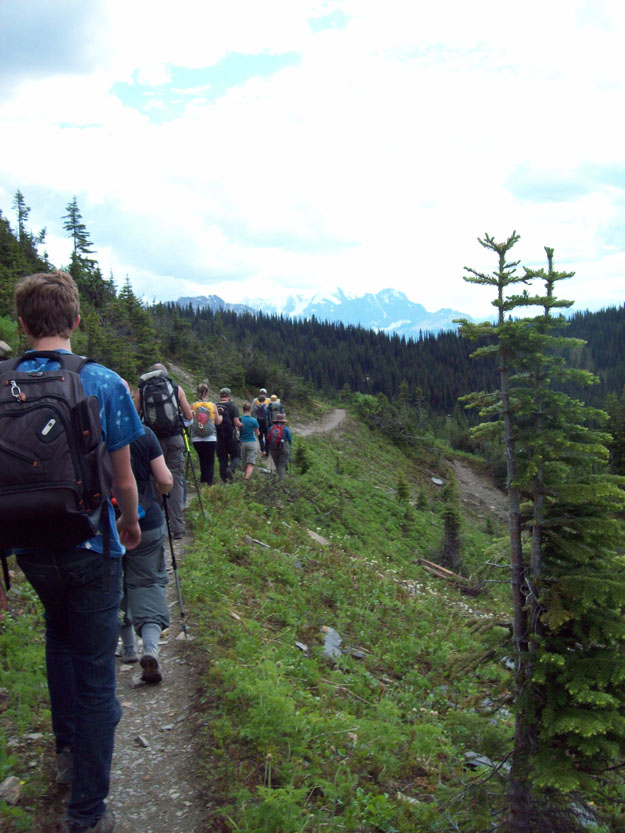
Together with other interested folks and a talented guide from the Burgess Shale Geoscience Foundation, Mr. Thomas Maguire, we trekked from Takakkaw Falls through the mountains of Yoho National Park to visit the Walcott Quarry of the Burgess Shale.
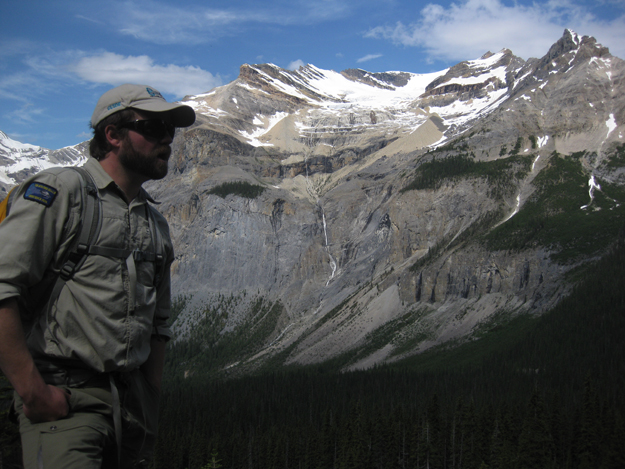
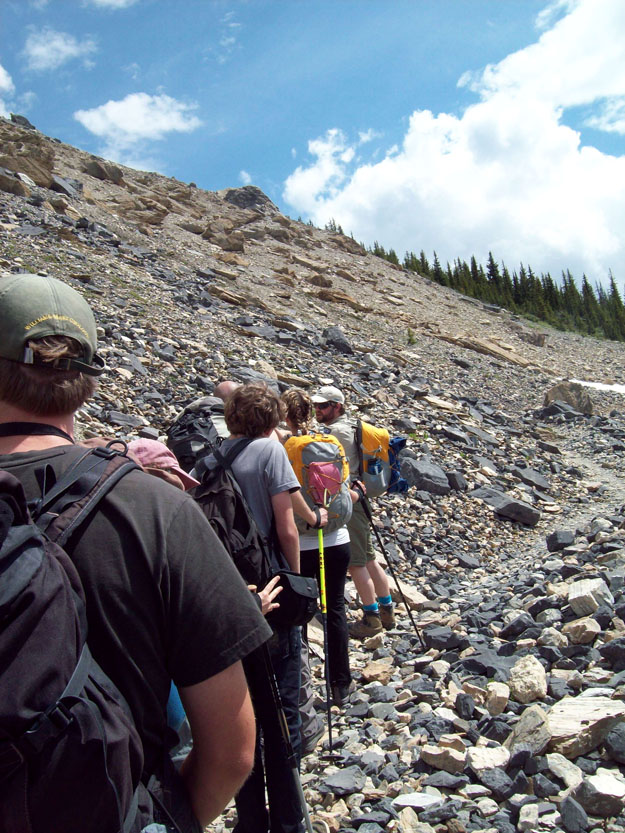
Looking up at Mt. Wapta from the trail below… this is partially dolomitized limestone of the Cambrian Eldon Formation:
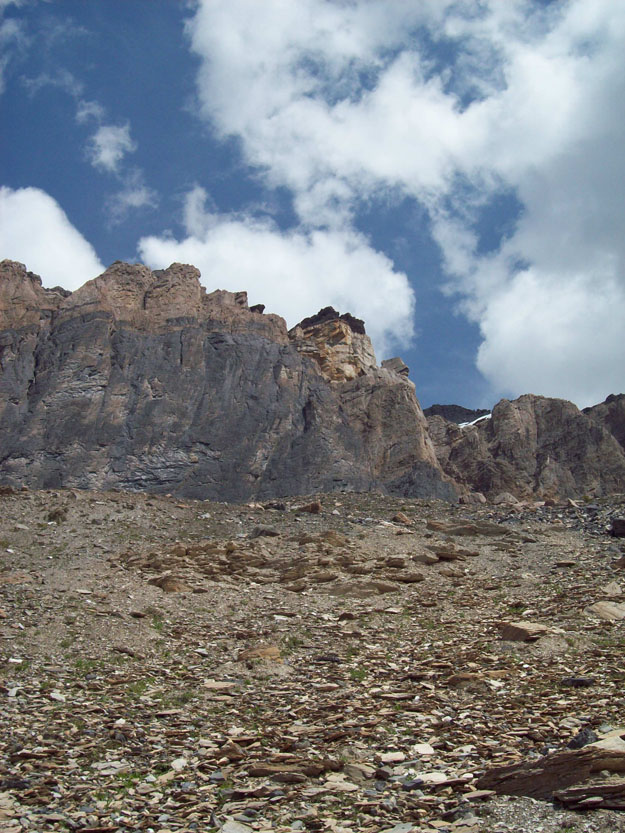
Here’s Mount Burgess, namesake of the Burgess Shale member of the Stephen Formation (itself also dominantly shaley):
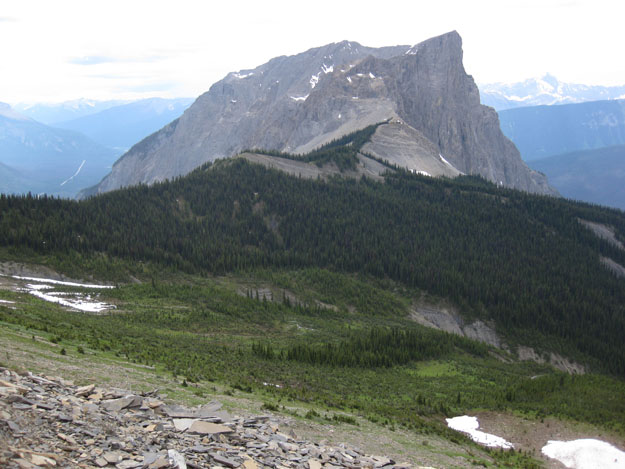
Beyond Mt. Burgess lies the awesome valley of the Kicking Horse River and the town of Field, British Columbia, which is base camp when you’re visiting the Burgess Shale.
Here’s Mt. Wapta from a more distant remove:
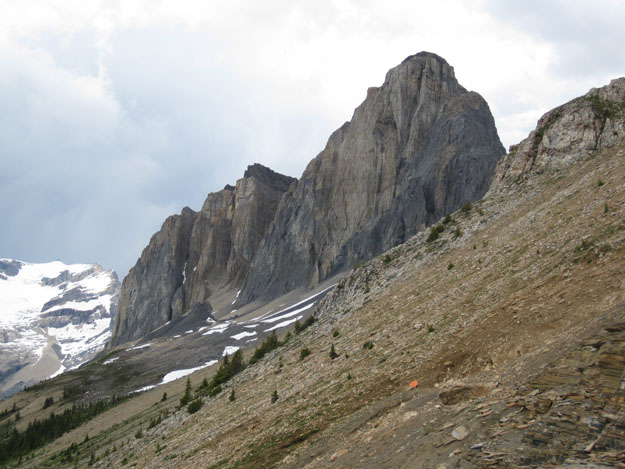
Emerald Lake and its gorgeous alluvial fan coming off the Presidential Range and filling in the basin:

Mt. Michael has a glacier sitting atop it in a throne-like position. There is a nice moraine complex marking the former edge of the glacier, and that (light-colored) moraine has been marked on the right with a (dark-colored) rock slide deposit.

Here’s the Walcott Quarry itself, the place where Charles Doolittle Walcott provided the first semi-systematic removal of fossil material from the site.
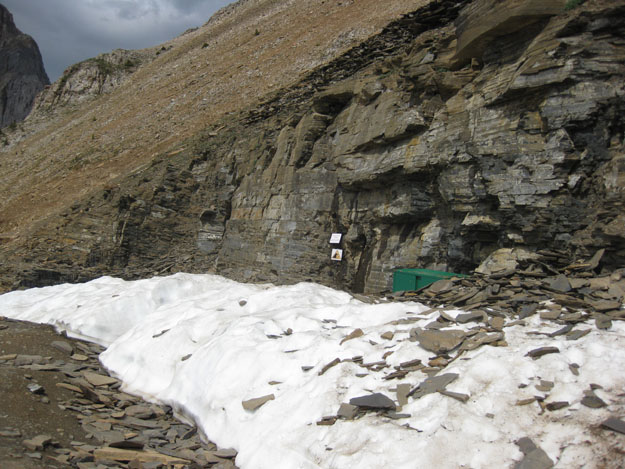
If you’re not familiar with the Burgess Shale, here’s the thirty-second summary: It’s a unique package of strata that preserves soft-bodied organisms (as well as the usual hard-bodied ones) from the middle Cambrian period of geologic time, and thus is one of a very few windows we have into the full diversity of life in the oceans at that time, unsullied by the typical biases of the fossil record (e.g., that hard parts are much more likely to be preserved). Since then, other lagerstätten of similar age (with overlapping fauna) have been discovered in Sirius Passet, Greenland, Chenjiang, China, and (a new one to me) Kaili, China.
The Burgess Shale shows us a more complete picture of how different life was 505 million years ago. Some even suggest that it is best interpreted as a revelation as to the contingency of evolutionary history. Here’s the happy geocouple at this special place:
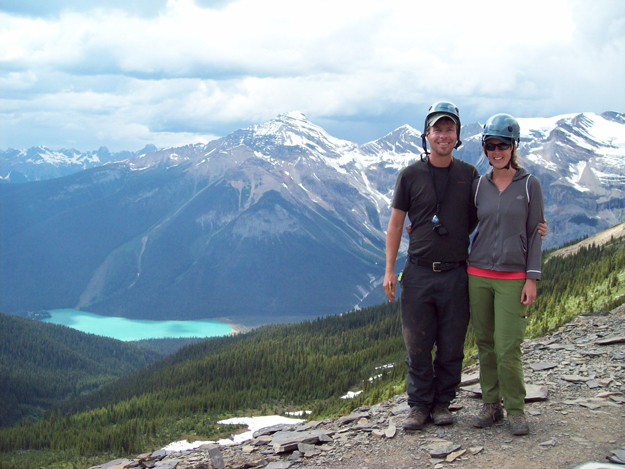
A few looks at the shale itself. Notice the thin laminations, suggesting very low water energy at the time of deposition:
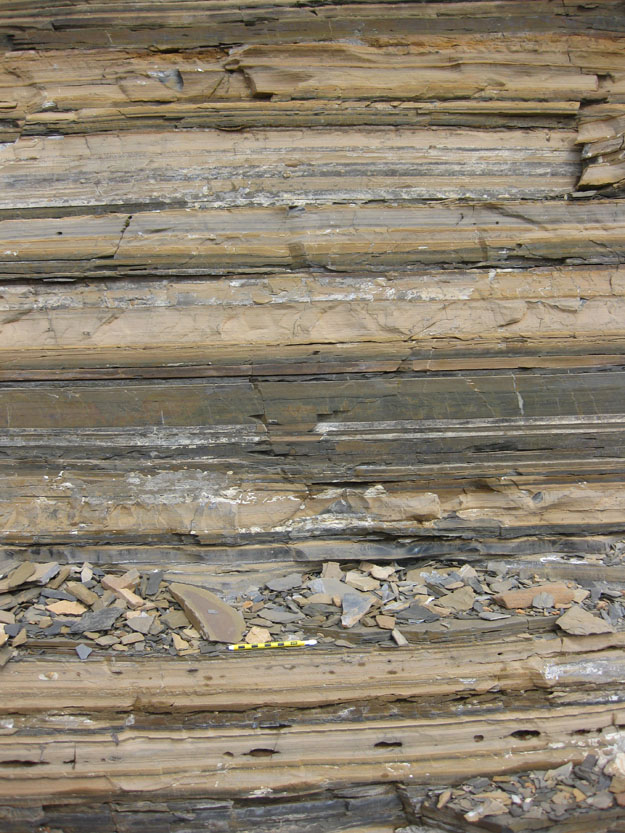
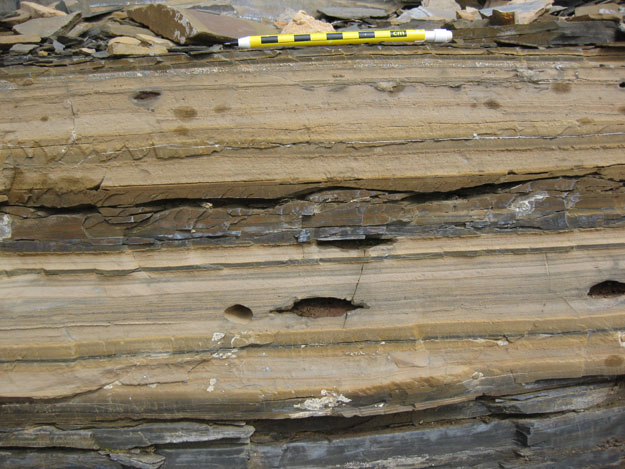
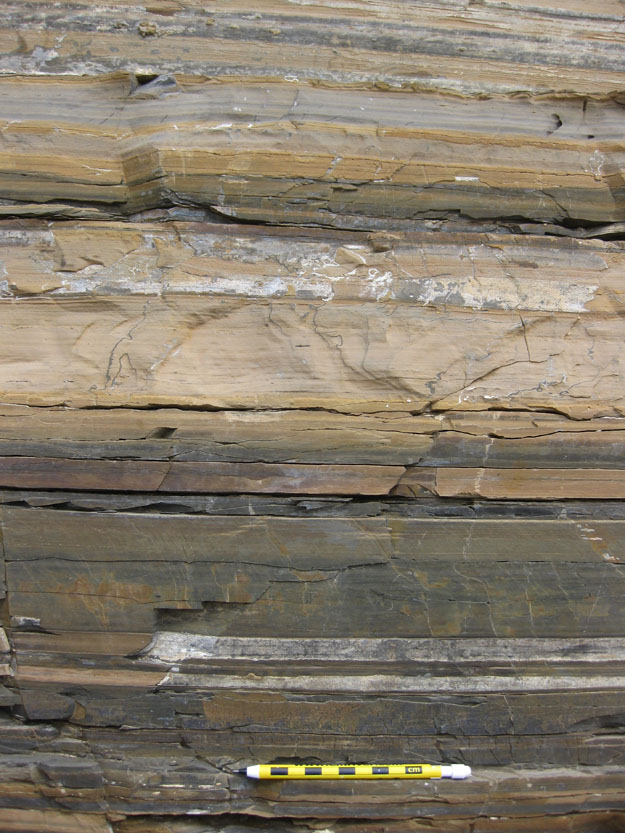
Four of these layers are intensely fossiliferous, a subtlety that Walcott was said to have missed due to his collection technique (dynamite). There was a little pyrite to be seen too:
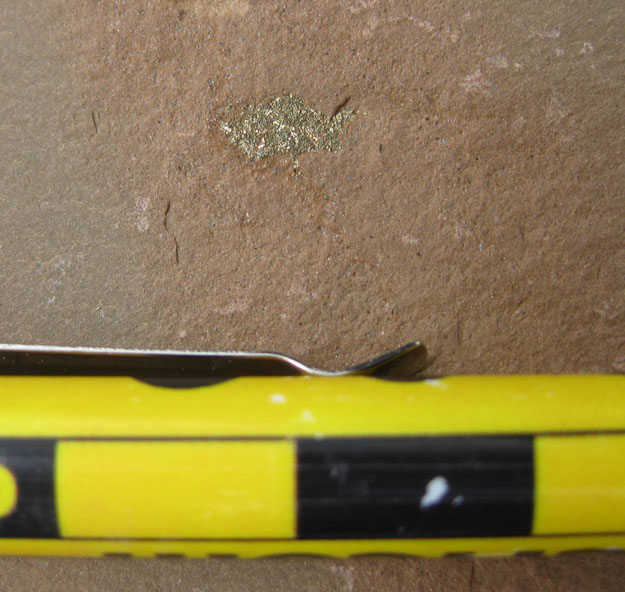
The geologic setting of the Burgess Shale is interesting in its own right. An online discussion of it can be found here. Basically, the Burgess is a member of the Stephen Formation, which is a deep water shale. Stratigraphically, it overlies the shallow-water carbonates of the Cathedral Formation, but the two are really time-equivalent units that are simply different depositional facies.
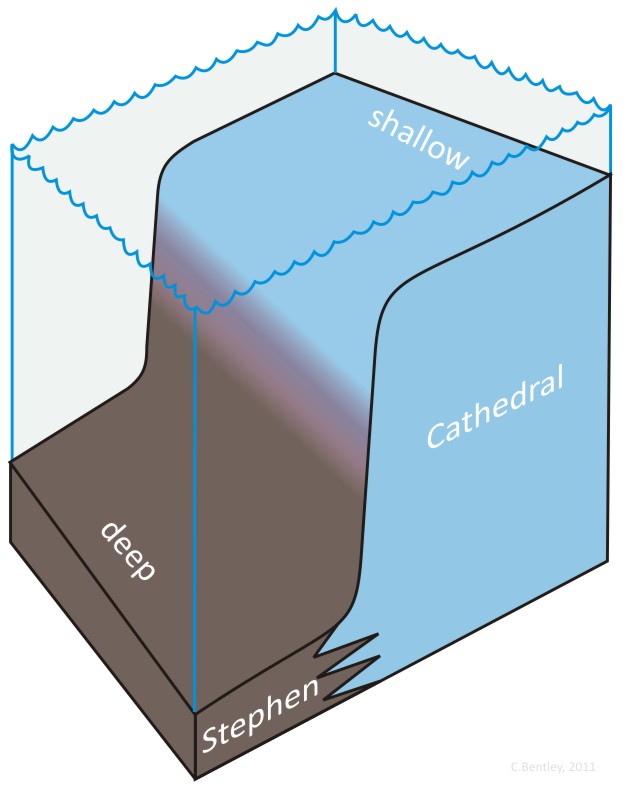
The different strata therefore can tell us something about the paleo-bathymetry at the site. The ancient slope-break that separated the two is called the Cathedral Escarpment. In the modern day, the boundary between the “shallow” and “deep” facies runs very clearly across the Canadian Rockies, where it’s dubbed the Kicking Horse Rim. The Rim is the modern geoexpression of the ancient Escarpment, which divided the platform facies of the Cathedral Formation from the basin facies of the Stephen Formation. The “standard model” for the deposition of the Burgess Shale (and the preservation of the organisms it contains) is “mud avalanches” off this steep slope, plopping down into the deep part of the basin. There are some criticisms of that interpretation, and a new idea is that perhaps the Burgess Shale fauna are in fact a community of organisms around a cold seep (such as can be found today in the Gulf of Mexico).
We were given half an hour to explore on our own (after first dropping our backpacks at the edge of the quarry):
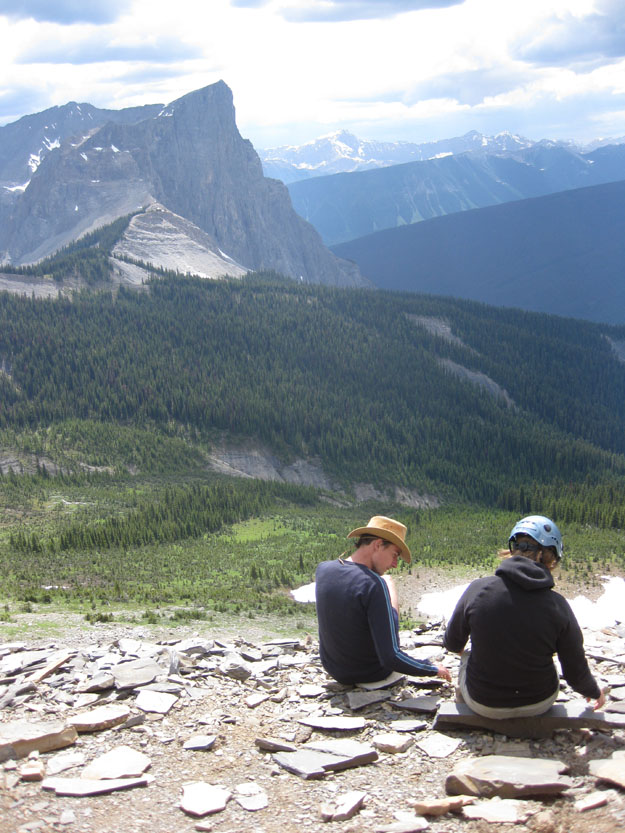
Thomas the guide displays some museum-quality specimens of some of the odder critters known from the quarry:
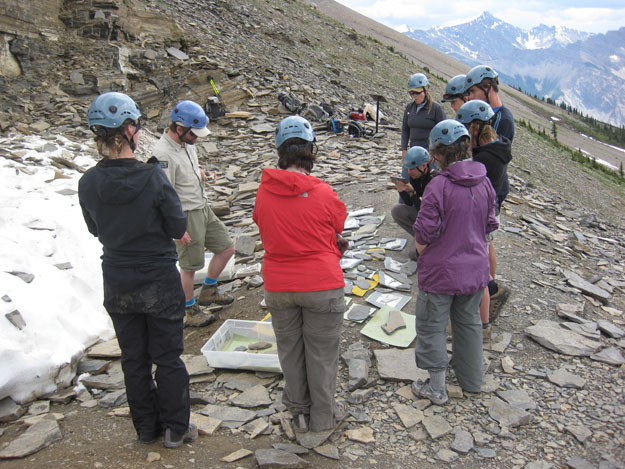
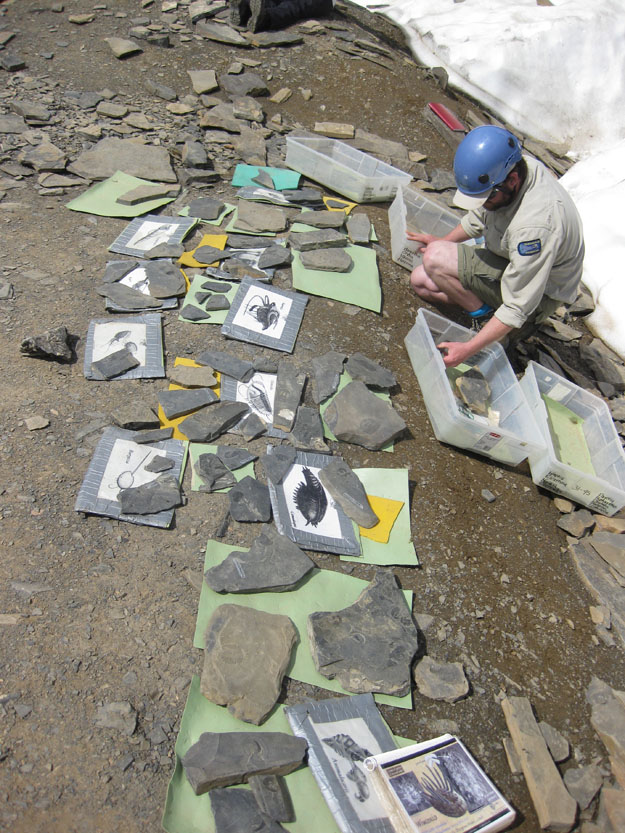

Scenella, a limpet-like mollusk:
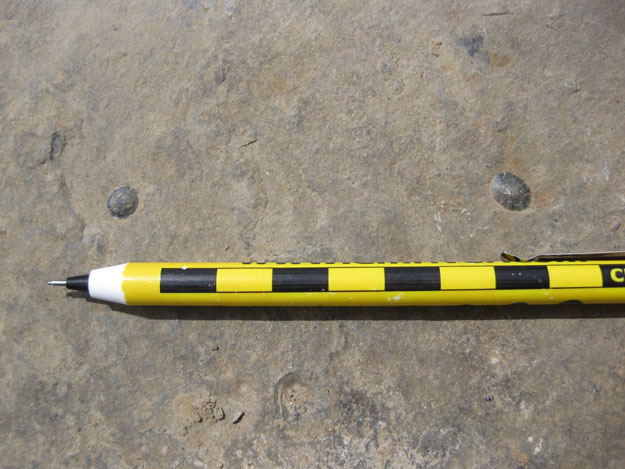
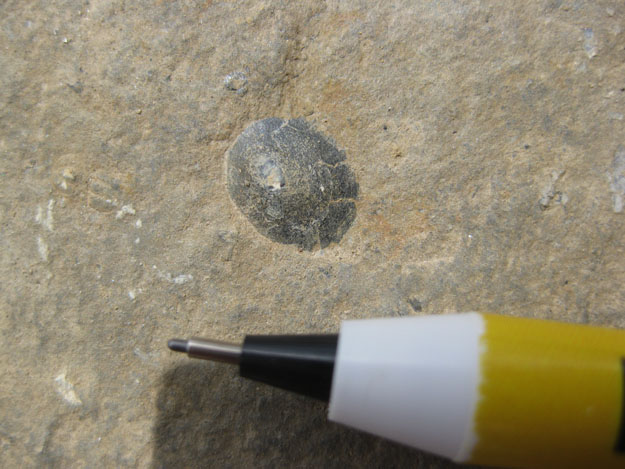

Some brachiopods (I think?):

And these definitely look brach-ish:

I don’t know what this is, but it was unique in my experience (all 30 minutes of it) at the Burgess Shale:
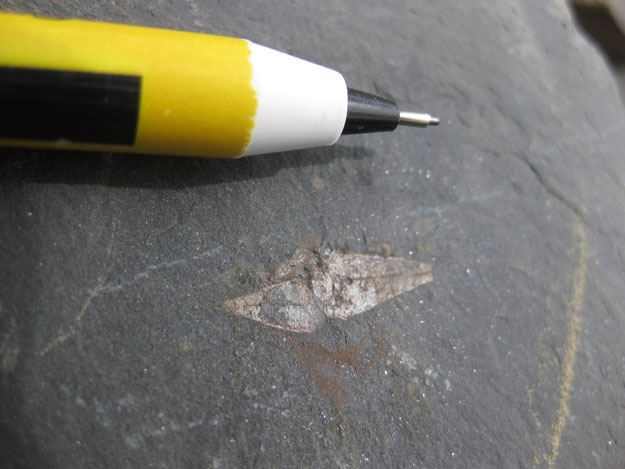
Some kind of segmented bag of a critter:
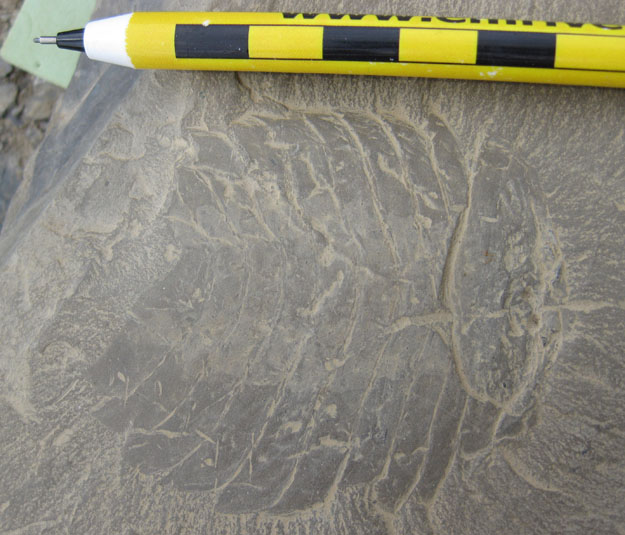
The sponge Vauxia, named for Walcott’s third (and final) wife:
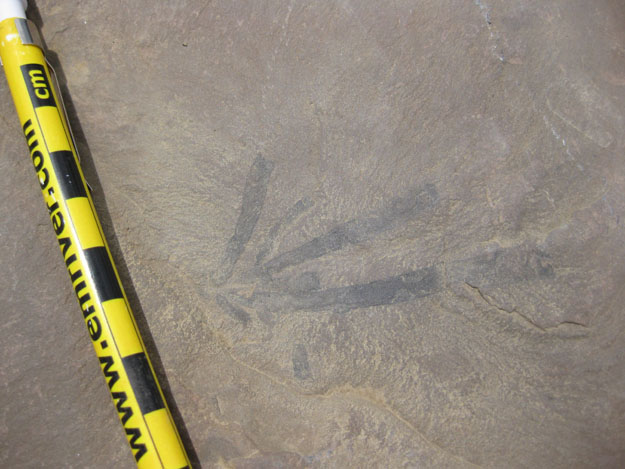
More Vauxia, both zoomed out and zoomed in:

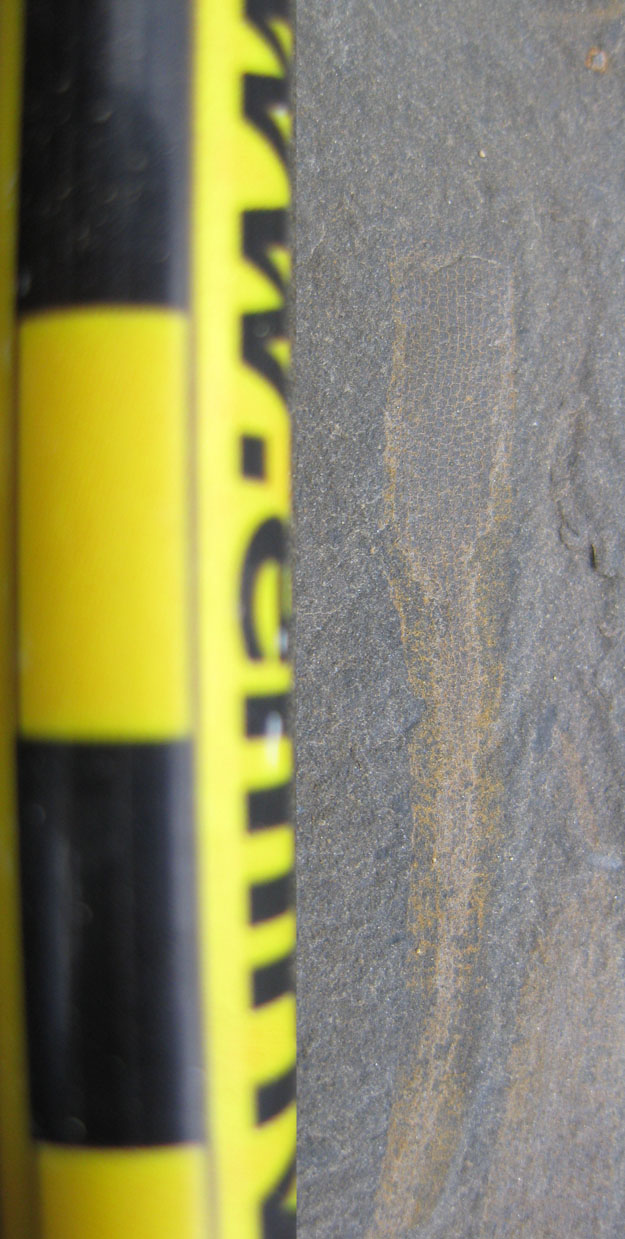
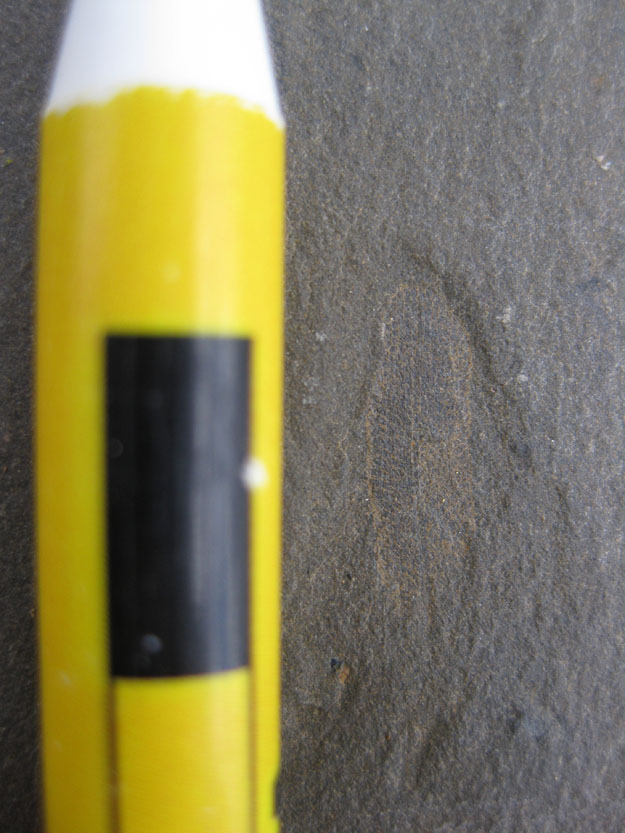
Was that another Vauxia? I can’t really tell…
Here’s a segmented wormy little fellow:
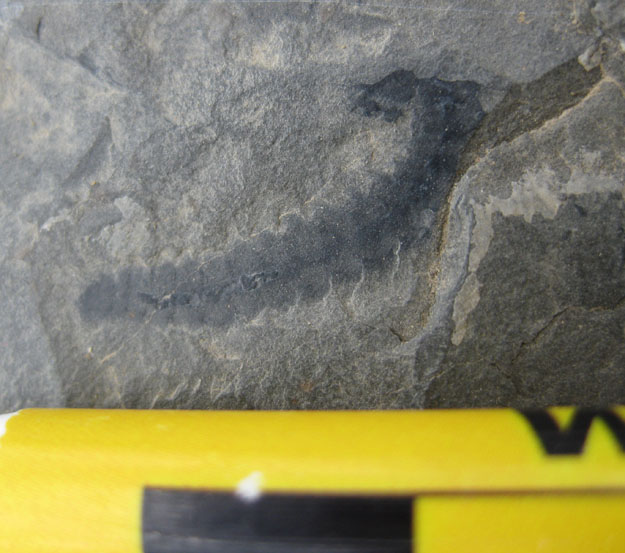
And a priapulid worm … Ottoia.
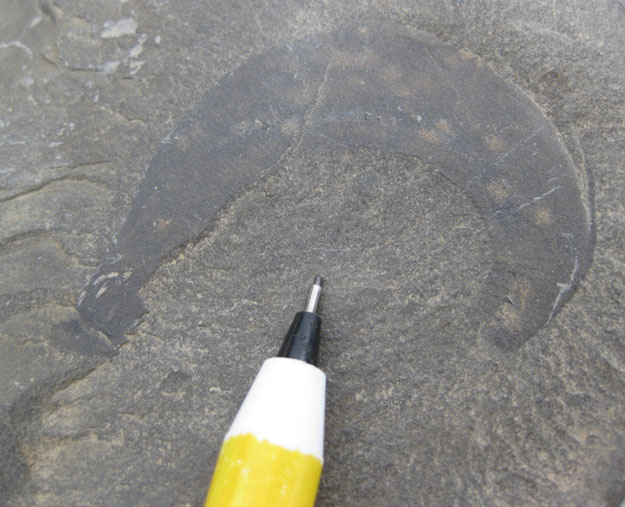
Another worm, genus unknown to me:
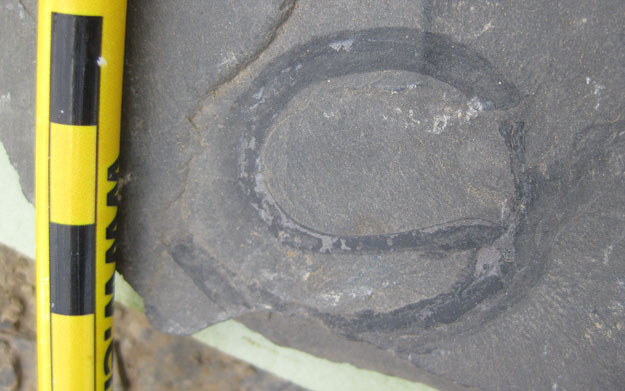
I have no idea what this is:
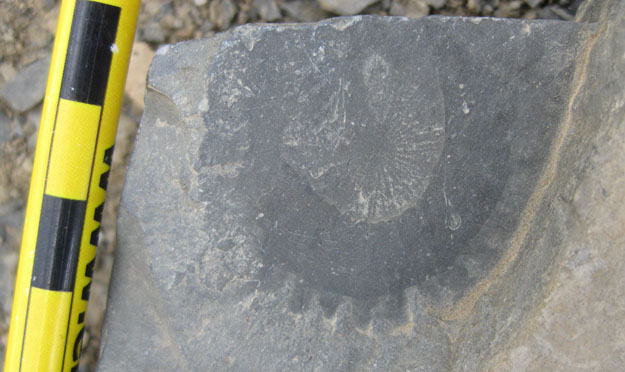
More worms…? (I should have been more meticulous in my photo note-taking, but actual time at the quarry was quite limited, so I just kept the shutter firing and figured I could figure it all out later):
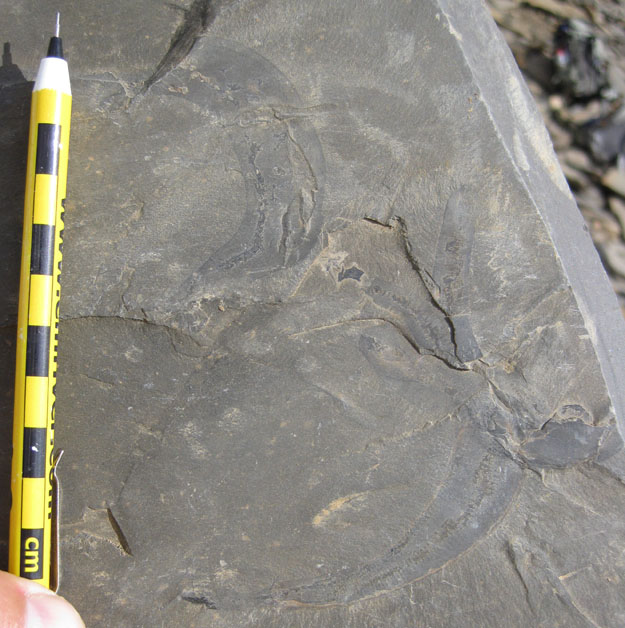
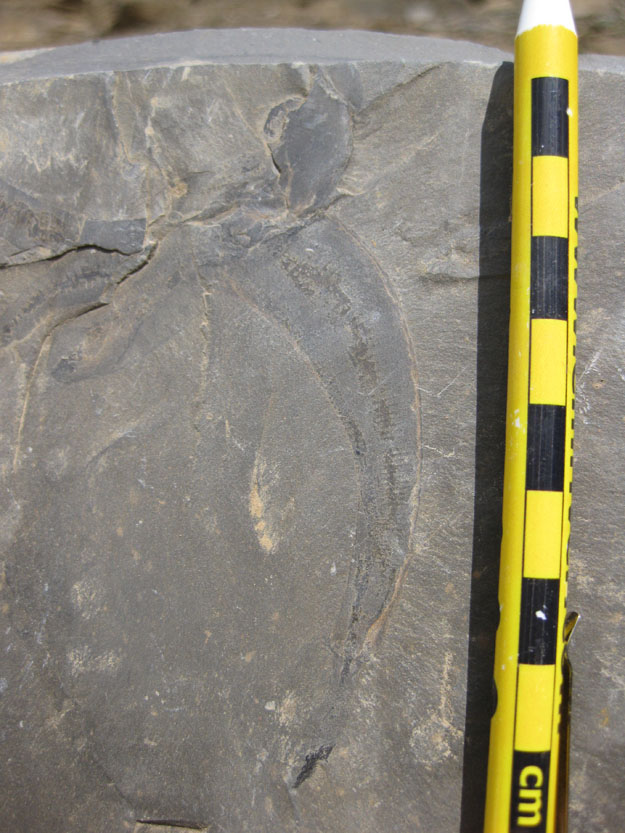
Anomalocaris! Great predator of the middle Cambrian seas and the Cathedral Escarpment… I present to you a pineapple-slice shaped mouth, and two of the serrated prongs that served, praying-mantis-forelimb-like, as feeding appendages:
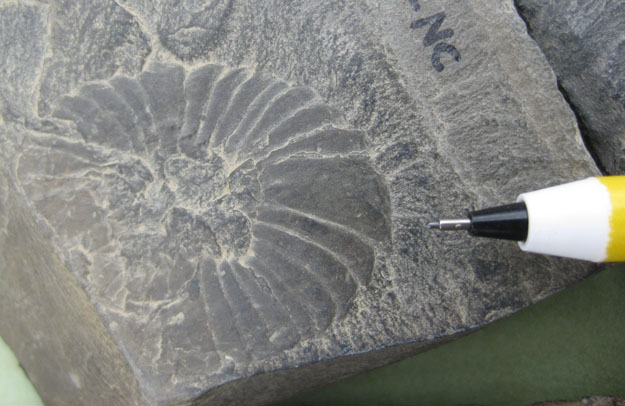
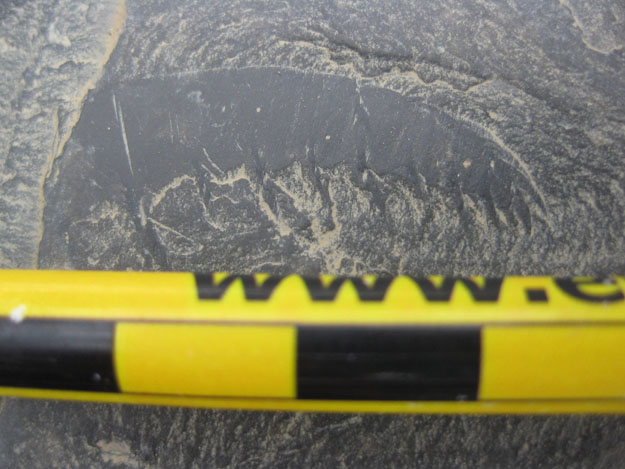
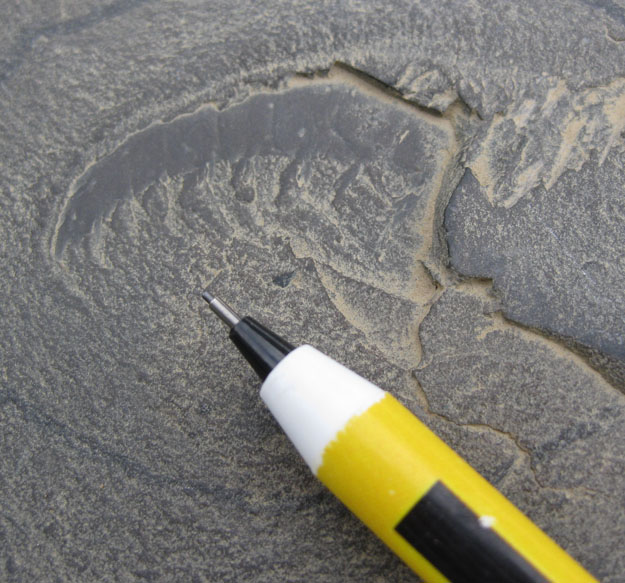
Here’s shaggy Wiwaxia, one of my favorite Burgess critters:
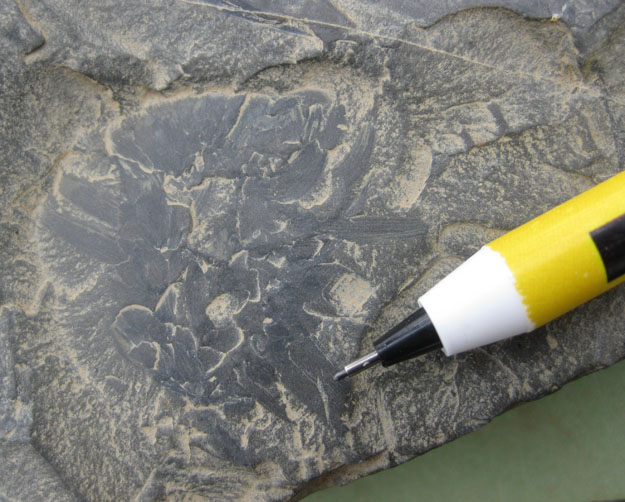
A brachiopod:
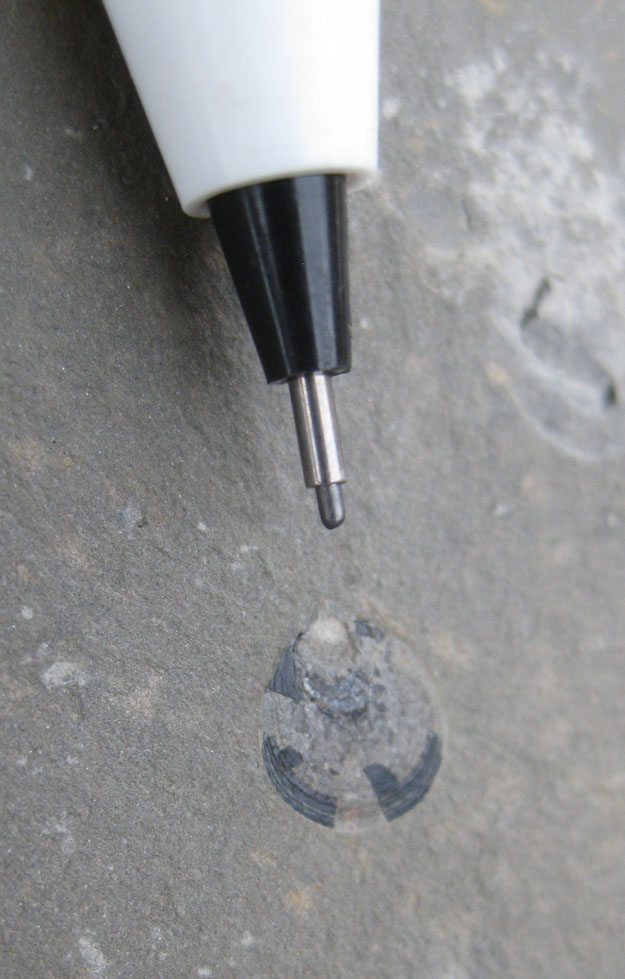
Similar (though broader):
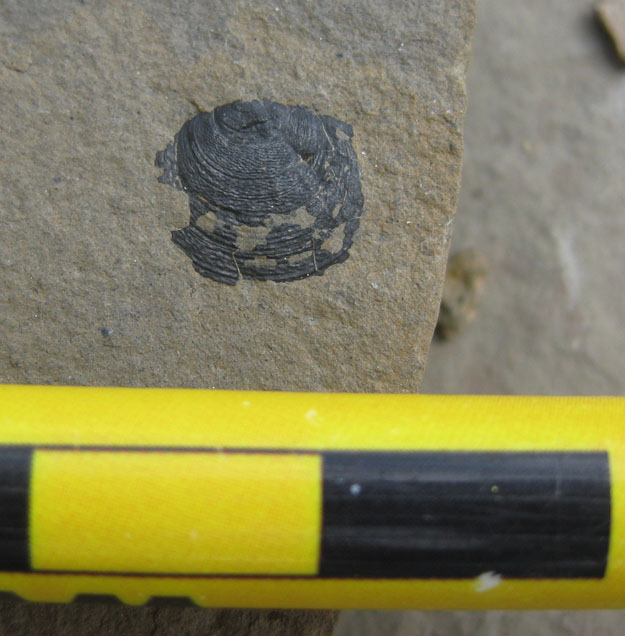
Waptia:
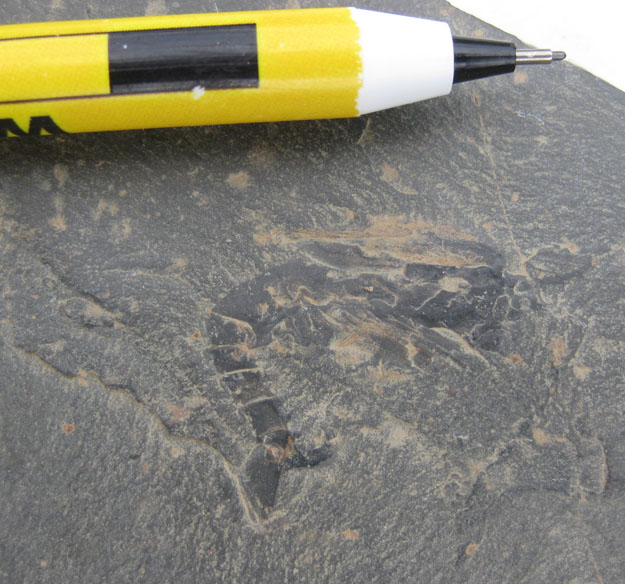
And, as I mentioned, there were some lovely trilobites:
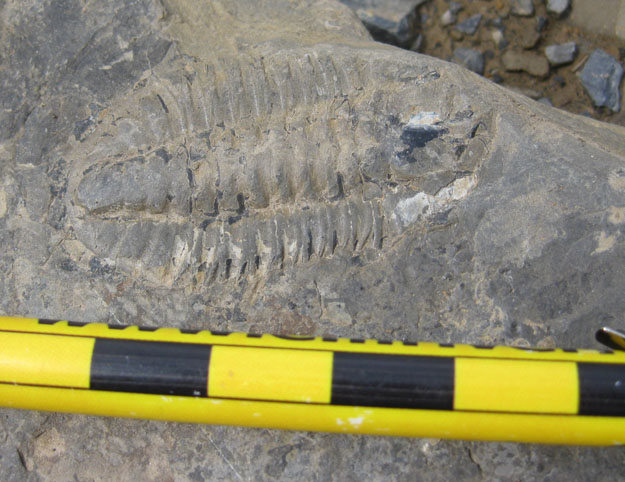
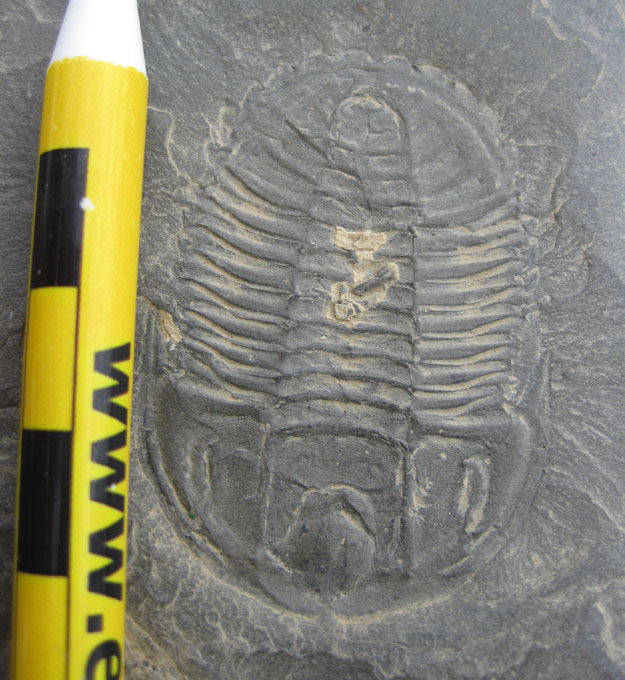
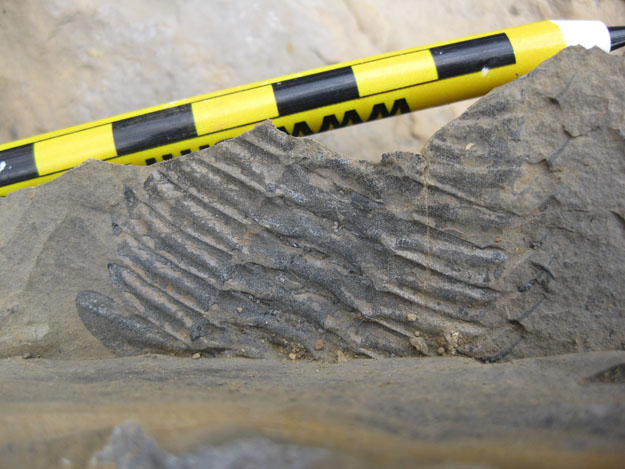
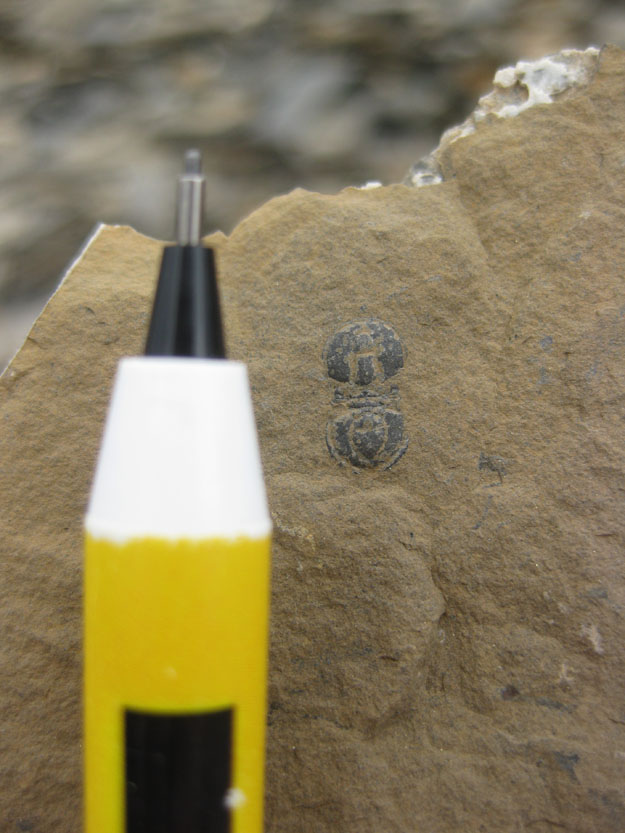
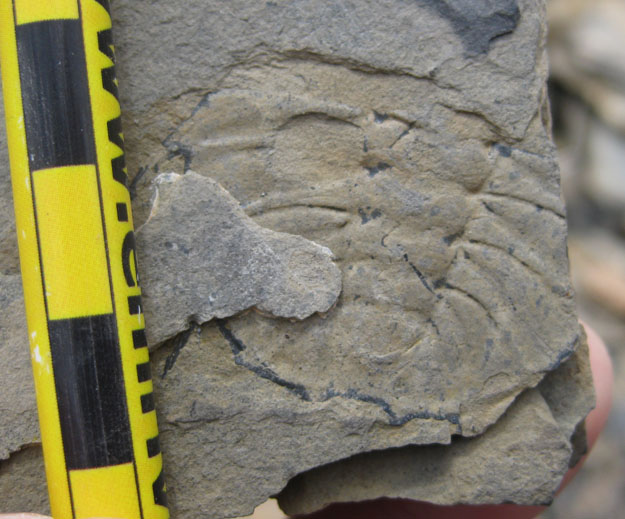
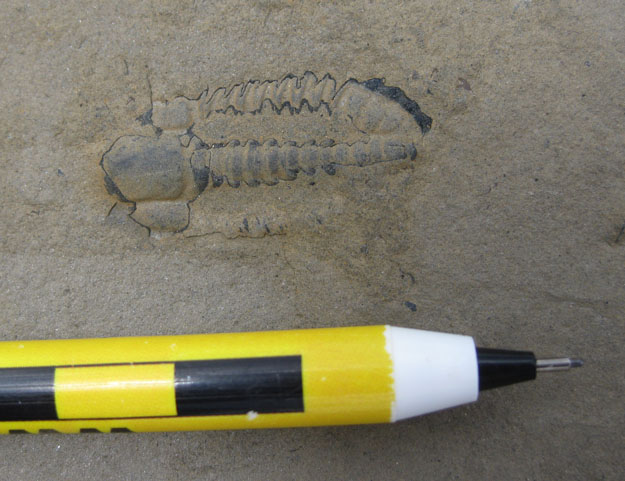
And, not exactly a trilobite, but clearly a similar arthropod, the lovely “lace crab” Marella, supposedly the first critter Walcott noticed in his discovery of the site:
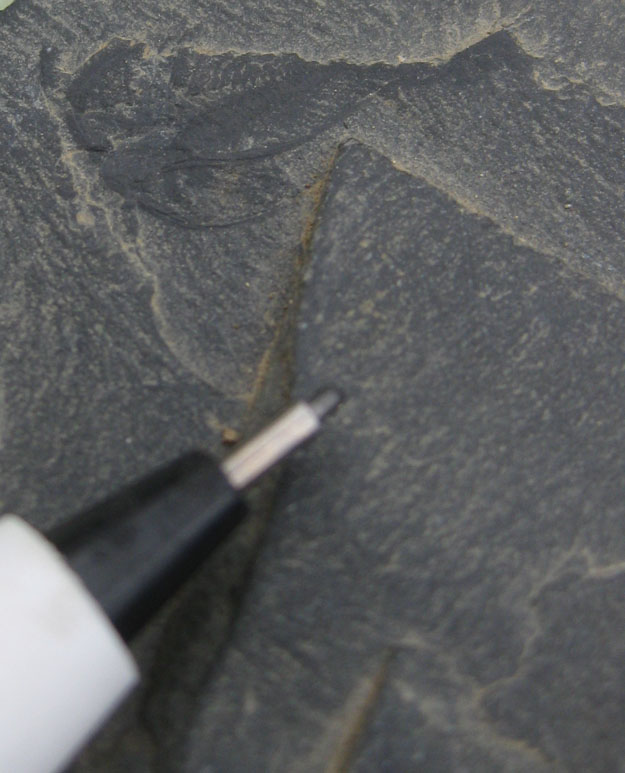
Then I found this:
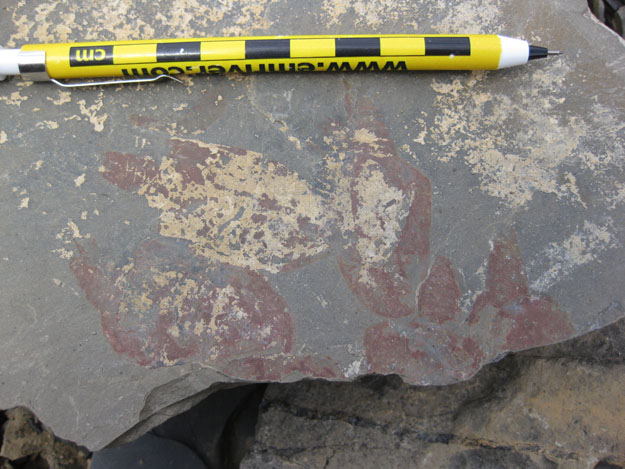
That’s Canadaspis, a shrimpy sort of critter, illustrated here:
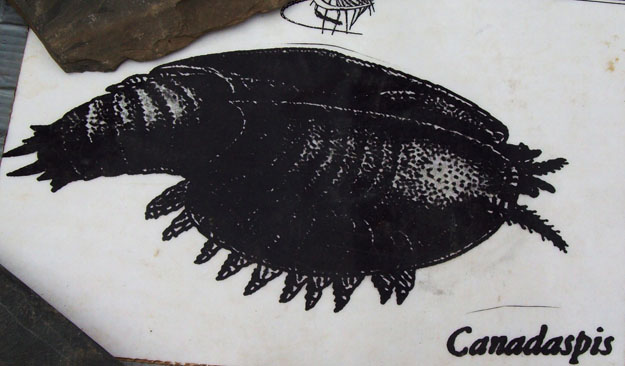
Allow me to use the miracle of copy-and-paste to annotate my discovery for you:

That’s five Canadaspis individuals in a single slab! Definitely the best specimen I found. But even as I was reeling with the flush of discovery, a modern arthropod decided to make an appearance, and it startled me out of my reverie:
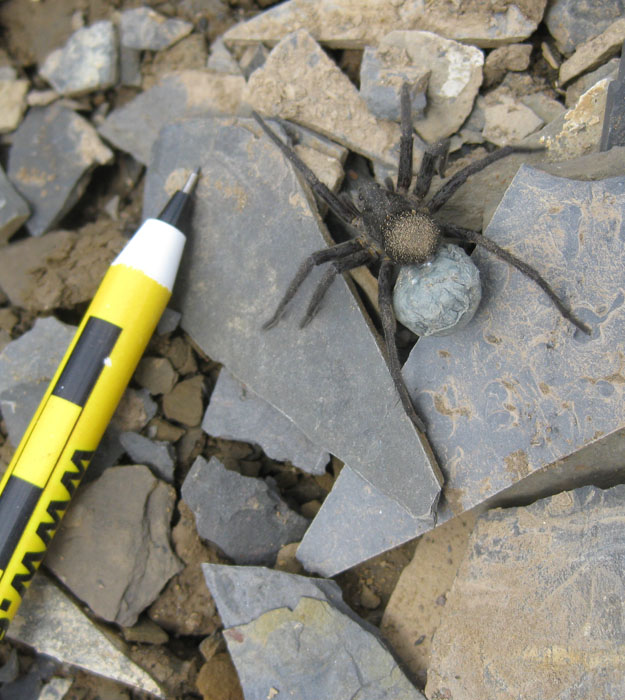
(Wolf spider with egg sac fanny pack.)
All too soon, it was time to leave and make the hike back to Takakkaw Falls and our cars. I wished I had more time at the quarry, but the group’s collective hiking ability kept us moving at a slow pace on the trail, and that limited the amount of time for exploration. If I could change anything about the experience, it would be to hike there with a fitter group, at a faster pace. But who’s complaining? Overall, I was pleased to be able to visit this spot, so important in the history of our understanding of life on Earth. I’m grateful it’s preserved and available to the public for educational pilgrimages like this one.

Great pictures! We just studied this in historical this summer and I am sending this blog to my class, even though it is over!
Great post! Were you allowed to bring any samples home or was it just catch and release?
No collecting at all – they’re very strict on that, and rightly so. If collecting were allowed, this place would be cleaned out before next Tuesday.
Yeah, that’s what I figured. But I thought with the limited access, they might let you take something. Must have been pretty awesome anyway.
Holy smokes! What a rad trip! You’re going to have lots of envious comments on this one!
Did the guide talk much about the sedimentology when you where there? I know Gabbott et al. have interpreted the burgess shale as having been a fairly high energy deposit, with decimeter scale mud-rich turbidites characterized in the “phyllopod bed”.
Very cool! Thank you for the post. I look forward to making the pilgrimage in the near future.
So. Jealous.
Can’t resist some arm-chair paleontologising here:
I’d guess your first unknown “unique in my 30 minutes” specimen is a couple of Hyolithids.
And the circular “I have no idea what this is” a few pictures down looks like Eldonia to me, or something like it.
Not that I’m a Cambrian expert by any stretch of the imagination.
I really hope I can make it up there some day….
“”
What a privilege for you, and what treat for us! Thanks for the great pictures- and for systematically including a scale. It’s easy to forget looking at photos and reconstructions just how small- but incredibly intricate- most of these critters are.
Great pictures – visiting the Burgess Shale is definitly on my to-do list. Thanks for the post
Fantastic post! Hiking to the quarry was one of the great experiences of my life; I didn’t get near as many pictures as you did. Nice work.
Such a long long time to be gone and a short time to be there.
I really think that the fact that you got to go to the Burgess Shale is really cool. Sometime I would like to go to the Burgess Shale.
The fossil of the long coiled legless worm could possibly be Louisella. The conical shells could possibly be hyolith shells. I believe the worm coiled into a U shape that has stubby legs might be Aysheaia. But I’m just guessing.
Thanks for putting up all those cool pictures!
Great pictures! Thank you.
beautiful photos. i really like the one you took of the stephenoscolex.